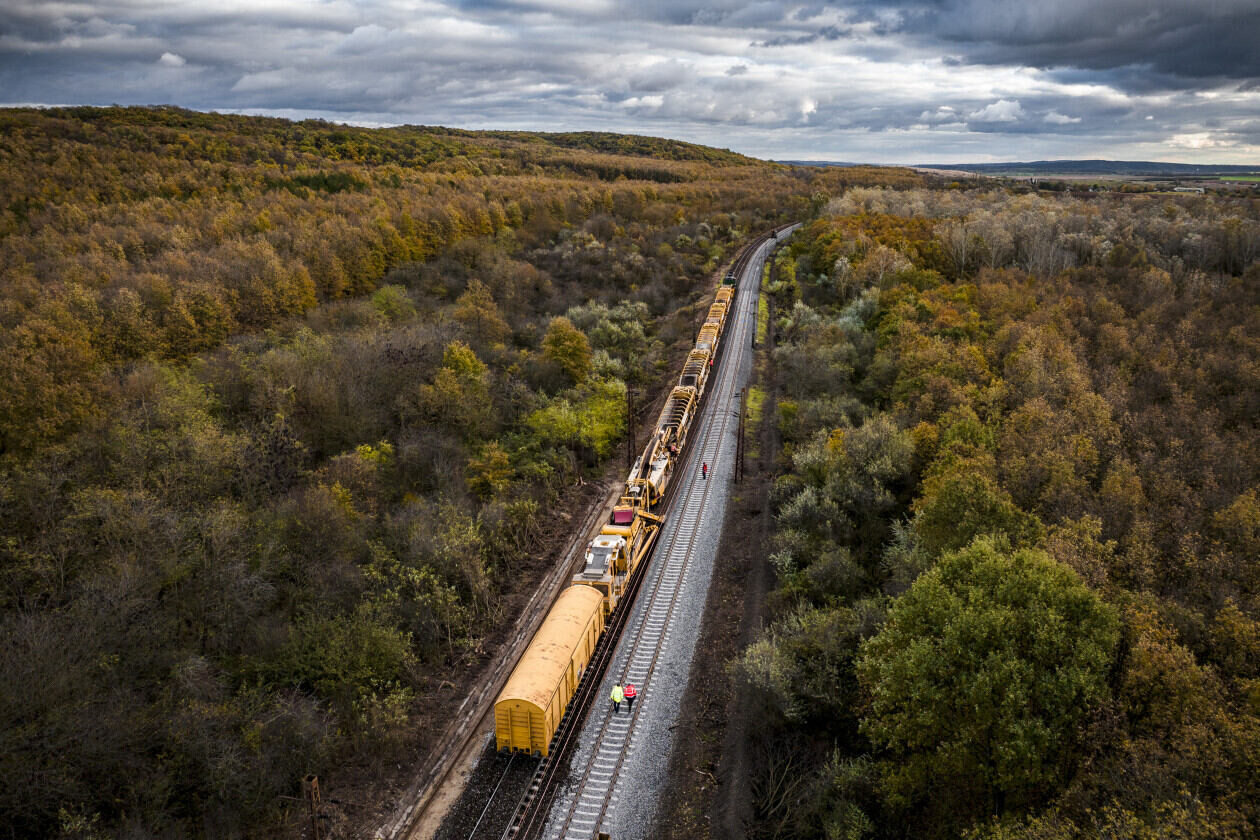Budapest-Belgrade railway: Construction reaches new milestone

As part of the Budapest-Belgrade railway line, Serbia will complete the construction of the more than 180-kilometre Belgrade-Subotica railway section by the end of 2024. Construction of the Novi Sad-Subotica section is already 80% complete.
Budapest-Belgrade railway construction at new milestone

Track-laying works on the 108-kilometre section of the Budapest-Belgrade railway line between Novi Sad and Subotica were completed on Thursday, China Railway said in a press release sent to Global Times. Upon completion of works, the results of dynamic tests showed that trains on the Novi Sad section could reach a top speed of 200 kilometres per hour, the company said,
noting that the railway could be operational by the end of the year,
Hungarian section to soon be completed
Earlier, Daily News Hungary reported that if all goes well, the construction of the Hungarian section of the Budapest-Belgrade railway, the complete renovation of line 150, will soon be completed. This would mean that the distance between the Serbian and Hungarian capitals would be covered in 2 hours 40 minutes. Serbian President Aleksandar Vucic said, “We are confident that our Hungarian friends will finish on the Hungarian side by the end of 2025 or February-March 2026”.
The Serbian president said last October that the Hungarian section of the Budapest-Belgrade railway line could be completed by summer 2026 at the latest.

In its first year of operation, the completed section of the Budapest-Belgrade railway between Belgrade and Novi Sad carried nearly 3 million passengers. Trains can now travel at speeds of 200 kilometres per hour, Világgazdaság writes. According to Global Times, in March, the Chinese-built Belgrade-Novi Sad high-speed railway marked its 2nd anniversary. The railway has transported over 7 million people between Serbia’s two largest cities since its operation started in 2022.
According to China Railway, the north-south Hungary-Serbia railway is a double-track electrified railway with a total length of 341.7 kilometers, including 183.1 kilometers in Serbia, with a designed maximum speed of 200 kilometers per hour. There are 158.6 kilometers in Hungary, with a designed maximum speed of 160 kilometers per hour.
Long-distance trains within Hungary are expected to see a one-hour reduction in travel time between Budapest and Kelebia, while suburban passengers can anticipate up to a 20-minute decrease in journey time to Kunszentmiklós-Tass. Additionally, plans are underway to shorten the Budapest-Vienna train journey to just 2 hours by 2025-2026, making it possible to travel from Belgrade to Vienna in less than 5 hours via a fixed route.
Read also:
- Surprise Twist: Budapest-Belgrade railway set to finish ahead of schedule!
- High-speed railway to link Budapest and Athens
Source:






Must be really great if our Politicians have to make the structure of the funding a State Secret:
https://thediplomat.com/2020/04/china-and-the-budapest-belgrade-railway-saga/
“The cost of the Budapest-Belgrade link is exorbitant: two billion euros and counting. That makes it the single most expensive rail investment in Hungary’s history. Some critical news outlets have calculated that in a best-case scenario it would take 130 years to pay off the investment — and in a more realistic one, 2,400 years. The government argues that the investment is of the “highest public interest”. Even so, it says the release of any details of the treaty “could endanger the enforcement of Hungary’s foreign policy and foreign trade interests”.”
https://balkaninsight.com/2020/04/22/budapest-to-belgrade-all-aboard-the-secret-express/
Good thing Hungary has plenty of money? Do scroll down for the facts and data – we are in a serious predicament:
https://ec.europa.eu/eurostat/web/products-euro-indicators/w/2-22042024-cp
The negative comment by ‘Norbert’ is typical of nay-sayers who scoff at progress. They are the Luddites of our time.